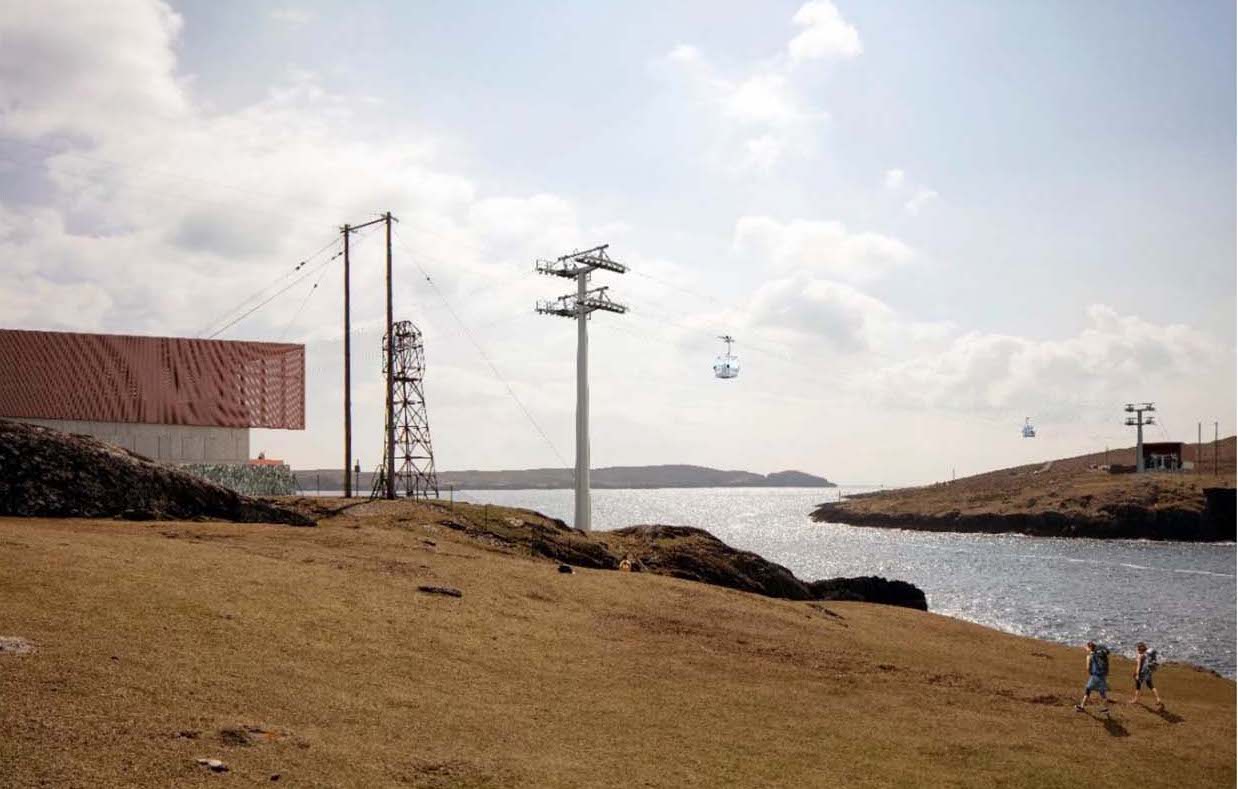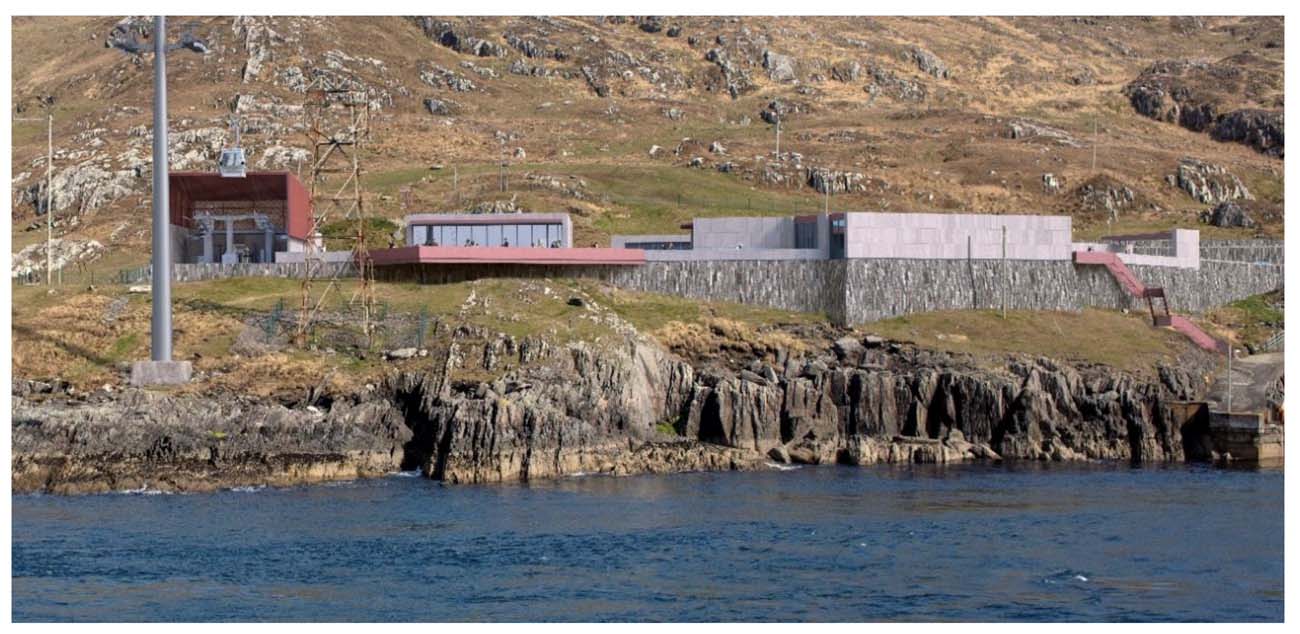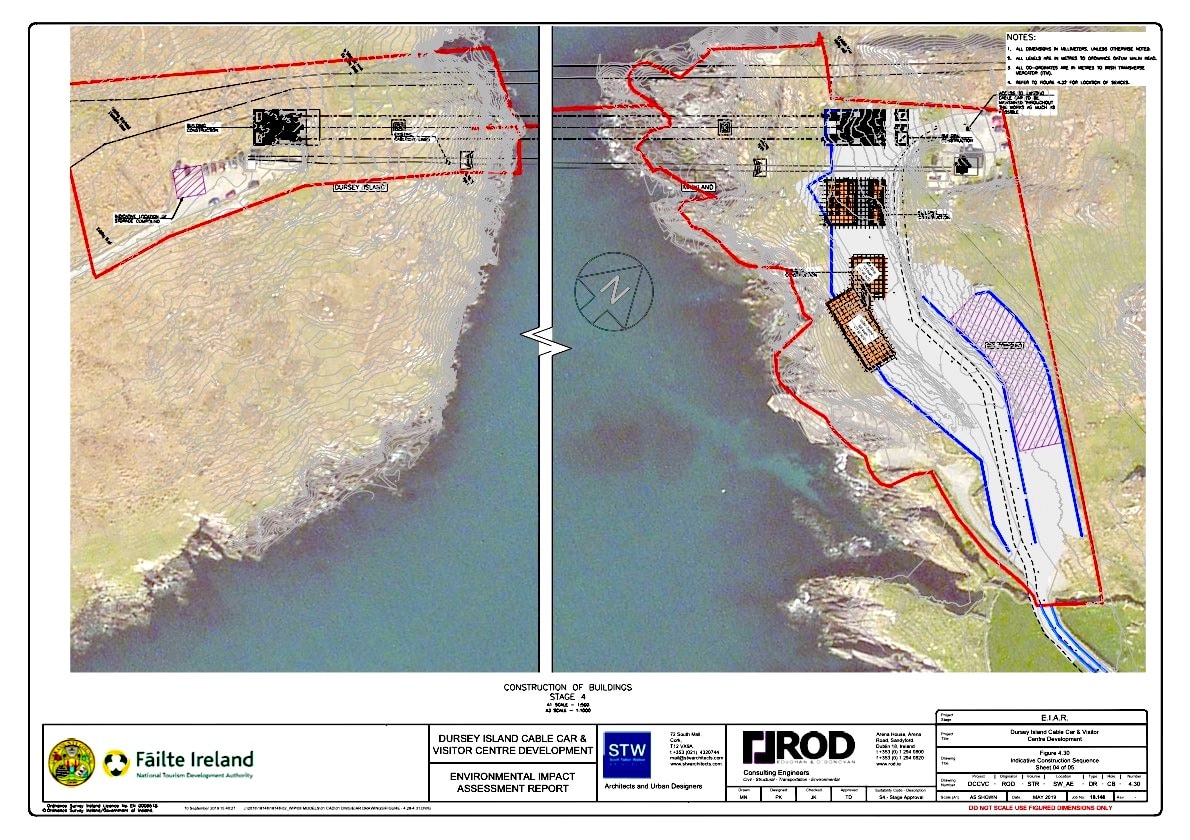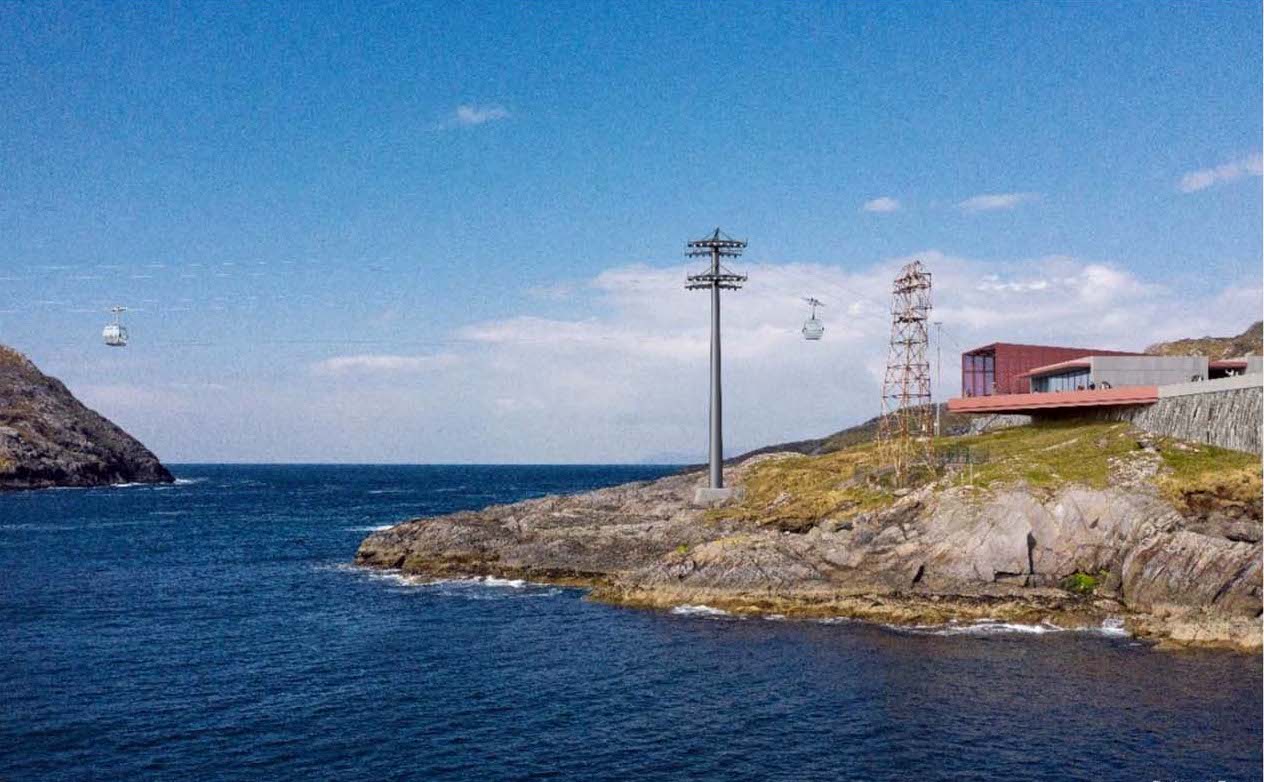This story / page is available in:
![]() German
German

Floating box: The Dursey cable car carries a maximum of six people
A free ride for mass tourism with the Dursey cable car: At the end of November, Ireland’s highest planning authority, An Bord Pleanála, approved the controversial project for the mass tourism marketing of Dursey Island – and thus flatly contradicted its own inspector. According to the plan, a tourist fairground is now to be built at the Dursey Sound at the tip of the Beara Peninsula in West Cork, attracting tens of thousands of rental car and campervan pilots to the southwestern headland every year.
Dursey Sound fairground: What looks like the tourist sell-out of the most beautiful peninsula in the southwest is widely applauded and loudly called for in the Irish public. Almost all audible voices are in favour: the regional tourism industry, the business world, the politicians, the profiteers in fact. Nevertheless, there seems to be a silent majority on the Beara Peninsula that does not profit from tourism and clearly recognises all the disadvantages: noise, air and environmental pollution, hustle and bustle, destruction of nature, as well as rising prices and the massive disruption of life as they know it.
The key question is: Why does Ireland now have to follow the disastrous example of all the other failed countries and sacrifice its nature on a grand scale to the interests of capital and profit? Has not enough destruction been done worldwide? Does Ireland now have to destroy its valuable natural resources in the shortest possible time just because there is money to be made?
The “most inappropriate large-scale tourism project since Mullaghmore“ is what Ireland’s most important environmental activist, Tony Lowes, calls the project, which has been in preparation for four years and has now been given the green light: The offshore Atlantic island of Dursey Island is to be connected to the mainland with a new, efficient cable car, and the transport capacity of the hitherto rather bizarre tourist attraction is to be increased more than twentyfold to 650 people per hour. The existing floating box for a maximum of six passengers is to give way to a two-cabin system for two times 15 passengers.
The project operator, Cork County Council, with the support of Fáilte Ireland, plans to quintuple Dursey’s current annual 20,000 visitors to 100,000 per year. To achieve this, island tourists will have to travel the entire length of the Beara Peninsula – either via Glengarriff or Kenmare. A visitor centre with a restaurant, sun terrace and souvenir shop is to be built on the mainland at the Sound, and a large car park will be able to accommodate 100 cars and several tourist buses. The narrow road out to Dursey Sound will have to be widened, and an electronic traffic guidance system is planned to coordinate access to the Beara Peninsula from Glengarriff.

Plans 2: This is how the cable car over Dursey Sound is to look according to the project operators’ vision
For the time being, the supreme planning authority has set a cap on the future hustle and bustle at Dursey Sound with its decision of November 2021. No more than 5,000 visitors per month are to be allowed to visit the island, which would be 60,000 per year for now – not counting all the visitors who travel to Dursey Sound without crossing over to the island. But how quickly are such limits obsolete when the profit machine is running and the transport capacities are available?
So far, there is no trace of public resistance. The poetically powerful voice of a John O’Donohue is missing in West Cork, it has been missing for a long time, in the whole of Ireland. Only a few environmental activists from Friends of the Irish Environment, An Taisce and Birdwatch Ireland are willing to go into battle for the natural world, for the last choughs of Ireland and against the exploitation of Dursey Island. They could score points in the courts – and maybe the silent majority will stir after all and build resistance to the fairground project in secret. An Irish friend recently sent me these lines:
“Like many I have huge reservations, but I also know the people of Beara are very set in their ways and a close net community, especially at Garnish and Allihies . . . Driving that narrow road at Garnish recently, I couldn’t help but feel sorry for the locals with a restaurant plan to attract more drivers, not to mention Dursley visitors. While I support a status quo, personally I feel I can’t get involved in any objections, for many reasons, I have friends who live there, who are equally in favour and against, its causing unrest at the moment, but I feel as I’m only visitor . . .
I have to respect the community having their say first on the situation, I have my doubts it will go ahead, farmers will be slow to facilitate widening roads etc, council will intervene but this will all take time, and I think the locals will object to increase of traffic. There is only one B&B west of Cahermore church, many locals are elderly and have no interest in tourism, and Garnish beach has minimum parking for locals in the summer. “
January days at the Dursey Sound are lonely and quiet. All you hear is the murmur of the Atlantic, the whistle of the wind and the cries of the hungry seagulls. Is this the calm before the storm? Fianna Fail MP Christopher O’Sullivan recently praised the ten-million-Euro Dursey project as “a tourism gamechanger for the Beara Peninsula and for the entire region”. How right he is: It would make the wild times on the Wild Atlantic Way even wilder – West West Cork would then be completely at the mercy of mass tourism – and would thus lose all that still makes it so unique, in Ireland and in the whole of Europe.
My opinion: Hands off Dursey Island. Leave the Dursey Sound alone.
Photos: Cover: Markus Bäuchle; Cork County Council Planning application
This story / page is available in:
![]() German
German





Leave A Comment